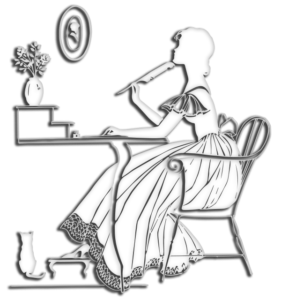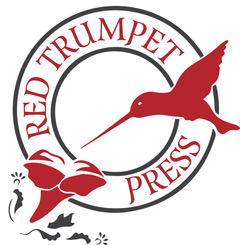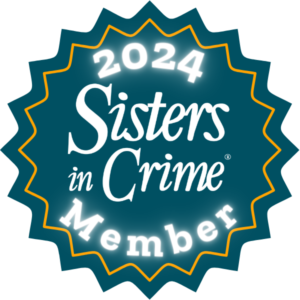 My soon-to-be-released romantic suspense novel, The Lair, takes place in Verona, Italy. Since I’m not Italian (except in my heart), I knew I had to bone up on all things Veronese, including the city itself (which I was fortunate enough to visit), the culture, the language, and of course, the food and drink. So imagine my horror when I checked my manuscript one more time before sending it off to be edited and came across the following sentence: “Dante suggested they meet for a cappuccino around four p.m.” What??!! How could I have made such an egregious error? I knew better … it must have been a remnant from a very early draft. Silly me.
My soon-to-be-released romantic suspense novel, The Lair, takes place in Verona, Italy. Since I’m not Italian (except in my heart), I knew I had to bone up on all things Veronese, including the city itself (which I was fortunate enough to visit), the culture, the language, and of course, the food and drink. So imagine my horror when I checked my manuscript one more time before sending it off to be edited and came across the following sentence: “Dante suggested they meet for a cappuccino around four p.m.” What??!! How could I have made such an egregious error? I knew better … it must have been a remnant from a very early draft. Silly me.
The fact is, Italians take great pride in their cuisine (as well they should) and they have definite ideas about the food they eat and the liquids they consume. Today I’m going to stick with some of the dos and don’ts of drinking (all kinds, not just booze). To help me chart these waters, I have the help of a wonderful little book by Ann Reavis called Italian Food Rules. http://amzn.to/1PvWuV1.
Ann, whom I met at a writer’s workshop last year, is one of those gutsy people who did more than simply dream about doing something totally different with her life—she actually did it. Having worked as both a nurse and an attorney, she decided in 1998 to spend the better part of a year in Italy—a love affair that’s lasted seventeen years and is still going strong. Over that time she not only paid attention to what the locals consider proper, but dug even deeper into the origins of many dining-related customs. Such is her book that even native Italians will learn something from it, and from visiting her website, http://www.tuscantraveler.com.
Rule number one in Ann’s book is “Don’t drink cappuccino after ten in the morning.” That’s because most Italians believe that too much milk later in the day can wreak havoc on your digestion. As Ann puts it, “To order a cappuccino after ten a.m. … is seen as suspect behavior worthy of at least a slight frown … and can escalate to outright ridicule.” You can see why I was aghast at what I had written. If you must have coffee after a meal, she says, you should order caffe macchiato, which means your espresso is “stained” or “marked” with a splash of steamed milk. Another no no: ordering double espressos. Italians think of an espresso as a fairly quick drink, so if you’re a caffeine fiend, I suppose you could order one right after the other.
Italian Food Rules covers the different types of coffee drinks you can order in Italy without being embarrassed. Whatever you do, don’t order a “Half caff soy latte to go.” Your server will be appalled. What if you’re a tea drinker, you say? Beware. According to Ann, the vast majority of Italians only drink tea when they’re sick, so if the barista looks at you with trepidation, you’ll know why.
HAPPY HOUR NO – APERITIVO, YES
A few scenes in my novel take place in restaurants and cafes, where drinks are sometimes ordered. In Italy, if you are thirsty around the cocktail hour, don’t look for a place with discounted drinks. According to the blogger Ms. Adventure, http://bit.ly/1RltCTb , if you see a sign for “Happy Hour,” watch out, because it’s probably geared toward tourists. Instead, Italians “open” their palates, usually between 7-9 p.m., by having an aperitivo with some kind of nibbles alongside. The drinks may even cost a bit more because of the appetizers.
The typical aperitivo for many Italians is a cocktail made with Campari or other bitter-style liqueur. You might order a Spritz (soda, Prosecco and Campari) or a Negroni, made with gin, vermouth and Campari. Prefer vodka? Substitute vodka for the gin and your Negroni becomes a Negroski. How about an Americano? That consists of soda (like Coke), vermouth and Campari.
Wine makes a good aperitivo, too, and is often cheaper than cocktails. This is when Italians will most likely have a sweet sparkling wine, like Prosecco, Spumante (white varieties), Fragolino or Brachetto (reds). Prosecco is like our typical sparkling wine (aka generic Champagne). If you’ve ever had a Bellini, that’s sparkling wine mixed with peach juice or puree. Delizioso!
Let’s say you want to celebrate an occasion by toasting. First of all, here’s an interesting aside from Liz Hall, who blogs for The International Kitchen website. http://bit.ly/1IX7PxF . She says a toast is called a toast because in Roman times, drinkers would put spiced or burnt bread (called “toast”) in the wine they drank to reduce the acidity and thereby improve the wine’s flavor. Todayifoundout.com pegs the literal use of toast in the wine to the 16th century, but for basically the same reason. http://bit.ly/1iogt8c. Whenever it started, we’re fortunate we don’t require the same soggy bread to enjoy the fruit of the vine that our forebears did!
As for Italian toasts, the most common sayings are salute (“to your health”) and cin cin (pronounced “chin chin”), which is of hazy origin (possibly Chinese) and seems to mean, basically, “Cheers.” Weddings, however, have special phrases, such as Per cent’anni (“for one hundred years”) and my personal favorite: Viva l’amore (“long live love”).
Once the meal begins, Italians pretty much stick with wine and/or water. Soft drinks, ice tea, juices, etc., all interfere with the taste of the food. The best wines? Depends on your taste and the region you live in. Every part of Italy has its home-grown favorite, so in a sense everyone is a wine snob.
When it comes to water, you can order it frizzante (carbonated) or naturale (plain, no fizz). Even though water is potable (fit for human consumption) throughout the country, many health-conscious Italians order it bottled rather than from the tap. One thing they don’t order is ice. One reason for this is that Italians (and other Europeans, apparently) feel that icy cold beverages cause stomach cramps and other gastrointestinal distress. Another reason may be that a cold drink can overpower the flavor of the food being eaten. Ultimately, it could be one of those “That’s the way we’ve always done it” kind of things. If you absolutely have to have ice, you can order it, but you’ll be pegged as an American tourist if you do. As Ann says, “Ice in Italy is to keep fresh fish fresh. Full stop.”
Italians will often end their dinner with a rich dessert wine, like Tuscany’s famous Vin Santo (literally “Holy Wine”), often served with a dessert, like biscotti. From personal experience, I can tell you that Vin Santo is a delectable treat all by itself.
After the meal is over, many Italians will cap their dining experience by drinking an espresso with sugar. In the Veneto region (where The Lair is set) a resentin, or “little rinser” might be served. That ‘s where, once you’ve finished your espresso, your host pours a little grappa (an Italian grape-based brandy) into the bottom of your sweetened espresso cup. You swirl it around and finish it off in one gulp. Lip-smacking good.
In a future post I’ll cover some of the well-known dishes of Italy’s Veneto region. Some of them made their way into The Lair, some will sound familiar, and others, well, let’s just say they may elicit a gasp or two.
How about you? Do you have a favorite Italian drink or drinking custom you’d like to share? I’d love to hear about it. In the meantime, cin cin!





